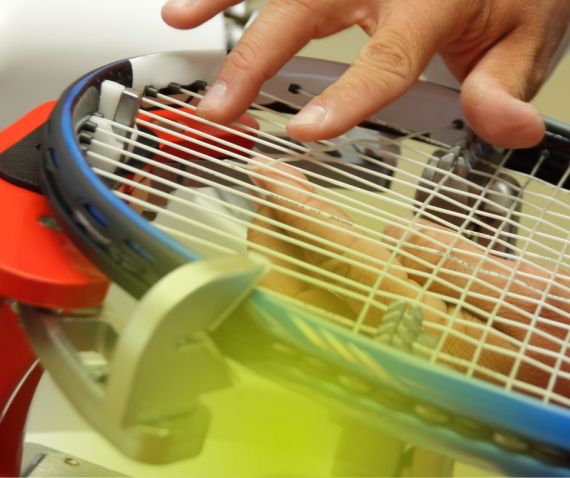Know Your Strings
You may have just purchased your first racquet, or you're looking to improve your game — choosing what string is one of the most important decisions any beginner, intermediate or advanced player will make. When choosing a string, there are many factors to consider, and it can get confusing.
Strings are vital to how a tennis racquet performs and, for many, can be harder than choosing the racquet. But knowing which string type is best for you can be difficult as there are hundreds to choose from. In addition, they each come with their own distinctive qualities, so choosing the right one will eventually come down to personal preference.
The type of player you are, your personal preferences, and the type of racquet you play with will all contribute to your decision. Keep in mind that it may take some experimenting to find which one is right for you.
- Synthetic gut: This is an excellent place to start for tennis newbies or if you're unsure what string to use. It is the cheapest type of string you can buy and is typically made of nylon. It is not extraordinary, but it offers an average overall performance and playability. The durability of synthetic gut, however, is not the longest out of all of the string types. Recommended string tension for synthetic gut would be mid-range.
- Natural gut: This string retains its tension and offers optimal playing characteristics longer than any other string type. It is an excellent choice for players with tennis elbow or sensitive joints, and it can be tightly tensioned for control and spin without compromising comfort. You may find that the string will fray over time. The downside to this string type is that it is the most expensive of strings. Natural gut performs better at mid to high tension.
- Multifilament gut: This is a more affordable alternative to natural gut. In addition to being friendly to your joints and tendons, it also offers good playability and has very good tension management. This string, however, can have less control orientated. Multifilament perform better at mid to high tension.
- Polyester gut: This string type offers lots of spin and control due to its stiff monofilament construction. Polyester strings are great for experienced players as they are more durable. A downside to this string type is that it is harsher on the arm and loses tension quite quickly. It is recommended to string these racquets towards the lower end to allow more flexibility in the strings.
When is it time to restring a tennis racquet? Should you change the gauge or try a new string type? How do you know when to restring?
- String tension: Tension is the measure of the force pulled by a stringing machine when installing new strings. A lower tension will offer more power because of a decrease in the string stiffness. This impacts the direction of the ball when it leaves your strings. A higher tension offers more control because of increased stiffness, which has the opposite impact on the ball's direction as it leaves your strings. This also means the ball's flight path is lower; therefore, the ball doesn't fly as far and will land shorter on the court. If you are unsure about the tension needed for you, it is recommended to choose the middle tension and amend this if need be.
- When to restring your racquet: Breaking a string isn't the only time you need to restring your racquet; it also depends on how often you play. A general rule is to have it restrung yearly as often as you play in a week. For example, if you play 3 times a week, it is best to restring at least 3 times a year. However, this is just a guideline. Restringing could also depend on the string's durability.
- String gauge: Gauge is essentially the thickness of the string. The thicker the gauge or diameter of the string, the more durability and control, whereas the thinner the gauge, the more power and comfort.
- Should my strings be moving? Yes. The strings need to be flexible enough to cope with a ball landing on the strings and springing off. Think of a trampoline; if we landed on a trampoline that didn't flex, it would injure our body, and we wouldn't be able to spring up. This is the same for a tennis ball landing on a tennis racquet.
And don't forget when your racquet needs a service, we offer a professional stringing service with a wide variety of quality strings to choose from. In just 24 hours, we can have your racquet restrung and ready for your next match.
So, next time you are looking for new strings, remember these points because they will help you choose the best string type for you. Good luck on the courts and happy stringing!



